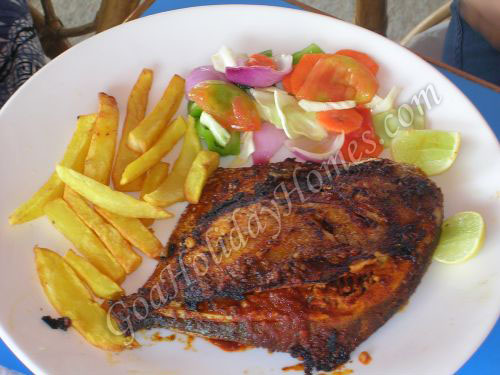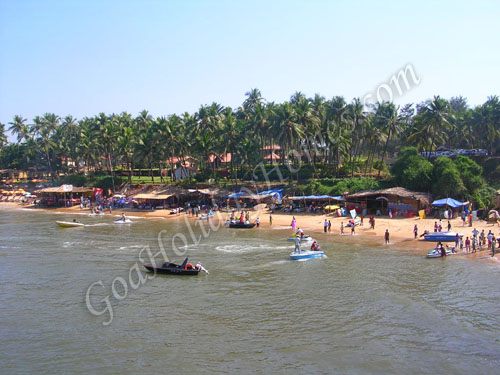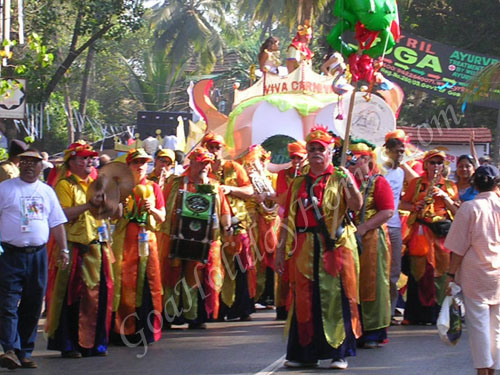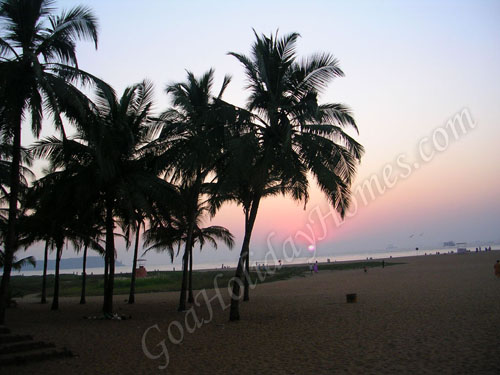Life Style In Goa
People from Goa are known as 'Goans'. This identity is enough to tell the difference especially in their lifestyle. The 450 years' rule of the Portuguese has added a new dimension by introducing their religion, belief, customs, attire, festivals, education, literature, modes of entertainment, and behaviour. A lot was absorbed and moulded into tradition and incorporated into lifestyle. Thus Goans became unique in India.
Goan lifestyle reflects a unique blend of East and West. Goans live life in style. That is in short Goan life style. Rich or not so rich, they do not equate life with money. Goans work and earn and spend in dress, food, entertainment and festivals. Goans love rest. Their life is peaceful, not driven by modern day sentiments, anxieties, tensions and other ills of a fast life. They are deeply religious. They follow family tradition and celebrate festivals with much religious fervour. Yet they are secular-minded. Goans share their joys and sorrows with others, cutting across religious barriers.
In villages, during festivals, the whole village takes part irrespective of caste or religion and becomes a big family. Food is their love. Pao, the bread, is ubiquitous throughout Goa. A gift of the Portuguese, Pao has become an essential part of food habit. Fish is another favourite and a must in a Goan's plate. Sea-food is a speciality. Another Portuguese connection is that there is no prohibition in Goa. Goa's famous contribution is fenny, the drink prepared from the cashew apple. Fenny preparation is in fact a cottage industry in Goa. In villages, fenny is prepared in many a house.
Drink is also cheaper than in other parts of India. Yet Goans drink within control. Dance and Music is in their blood and tradition. Goans dance to the maddening lilting tune of Latino music and sing together. At the same time Indian classical music is so dear to the Goans that theirs is the land that produced some of the most revered names of Indian classical music. Goans are hard working too. Their ancestors tilled this salty, barren land and made it fertile. Goans are everywhere in the world. For livelihood, Goans have migrated in large numbers, but they always retain the connection with their motherland. At least once in a year they surely come back to their motherland.
Goans love cleanliness, spaciousness and nature. Their houses reflect their nature the best way. Come and stay in Goa as a dear guest. You will never know when you have become a member of a family. Goans trust in the eternal Indian tradition of Vasudhaiva Kutumbakam - the whole world is a family. Miles of the coastal enchantment, Goan beaches fascinate visitors. There are 40 lovely beaches in Goa. Most of them are pollution free. The Most developed beach segment is the Calangute, Baga, Anjuna belt in the Bardez subdivision, north of Panaji.
The beautiful and untouched beaches in the north Goa are Keri beach, Arambol beach (also known as Harmal beach), Mandrem beach and Morjim beach. Caranzalem, Marvel, Dona Paula beach, Benaulim beach, Fort Aguada and Siridao beach are other famous beaches. These are all in close proximity to Margao harbor. The Margao subdivision has a string of excellent beaches of Goa, like Bogmalo beach, Issorcim beach, Cola beach, Pale, Velsao beach, and Cansaulim beach.
The Salcete sub division accounts for Goa's widest and cleanest beaches. They are Gaudalim, Colva beach, Benaulim, Mobor, Varca beach, Carmona beach and Cavelossim beach. Goa ends in Canacona subdivision, and Palolem beach, Colaba, Talpona and Galgibag beach are the beaches in the division. Across this is the Karnatakan beach of Karuvar. The Chapora River demarcates the Bardez subdivision. Here one can find several beaches i.e. the Chapora beach, Anjuna beach, Baga beach, Calangute beach, Candolim beach, Sinquerim beach, and an inner beach called Quegdevelim is a rocky beach. Most polluted beaches are the Vasco Da Gama beaches of Cumberthi and Baina.




